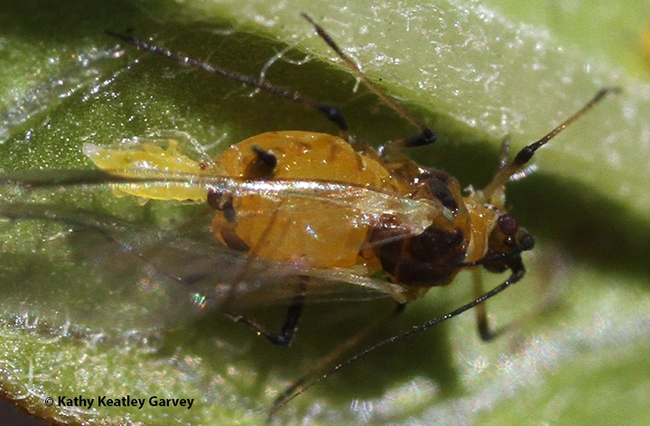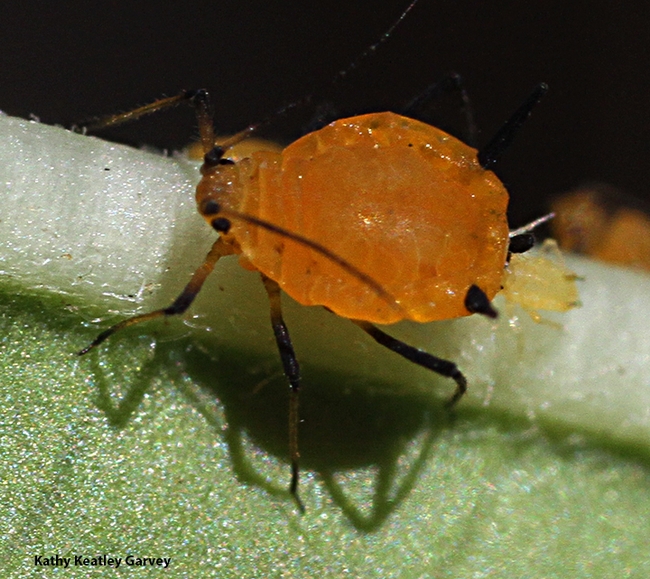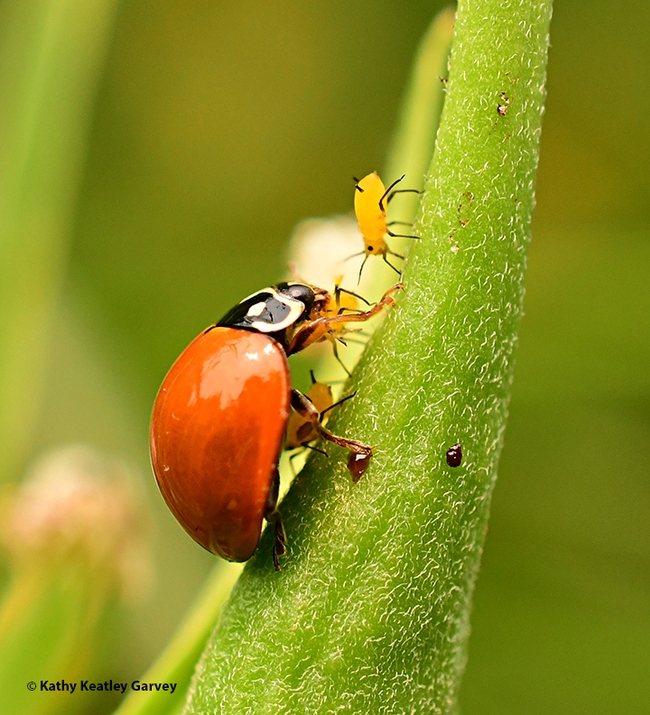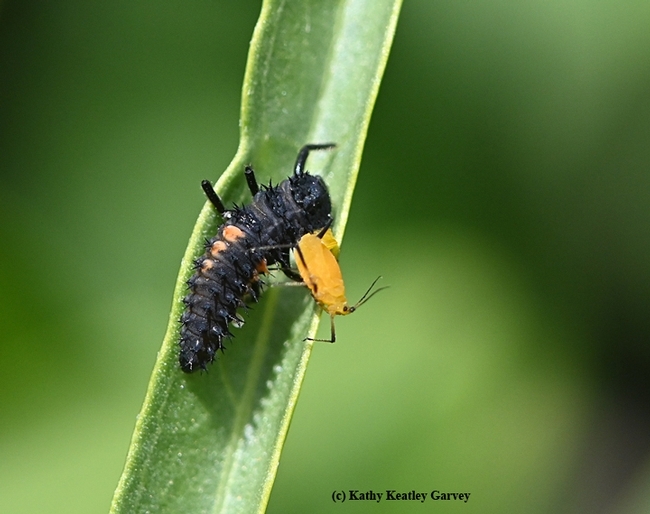You know those dratted aphids, those little pests that suck the very lifeblood out of your prized plants?
Well, have you ever watched them give birth?
They do, you know. Live births.
The UC Statewide Integrated Pest Management Program says that "Aphids have many generations a year. Most aphids in California's mild climate reproduce asexually throughout most or all of the year with adult females giving birth to live offspring—often as many as 12 per day—without mating."
"Because each adult aphid can produce up to 80 offspring in a matter of a week, aphid populations can increase with great speed."
We've captured a few images of aphids giving birth in our Vacaville pollination garden...but only with the microscopic-like Canon MPE-65mm lens (mounted on an EOS 7D). If you think aphids are tiny, their babies are super tiny.
Videos, however, tell the story better. Check out the KQED Deep Look video Born Pregnant: Aphids Invade with an Onslaught of Clones.
As we mentioned in a previous Bug Squad blog, UC Cooperative Extension specialist and agricultural entomologist Ian Grettenberger of the UC Davis Department of Entomology and Nematology faculty, assisted with the KQED Deep Look video, which won a nature award equivalent to an Oscar.
Grettenberger provided his expertise--and some aphids--working with digital video producer Josh Cassidy, senior video producer for KQED Science and the lead producer and cinematographer for Deep Look, a short-form nature series that illuminates fascinating stories in the natural world. The video scored an international Jackson Wild Media Award, winning first place in the category, "Animal Behavior, Short Form video (17 minutes or less)."
The Deep Video points out that the aphids are highly skilled at "making babies."
Yes, they are.
Fortunately, we have lady beetles (aka ladybugs) and soldier beetles that are highly skilled at eating them!
Attached Images:

A close-up of an aphid giving birth in a Vacaville pollinator garden. (Photo by Kathy Keatley Garvey)

Another close-up of an aphid giving birth in a Vacaville pollinator garden. (Photo by Kathy Keatley Garvey)

A lady beetle, aka ladybug, chowing down on an aphid, while another "waits its turn." (Photo by Kathy Keatley Garvey)

The larvae of lady beetles also feast on aphids. This larva is getting its share. (Photo by Kathy Keatley Garvey)